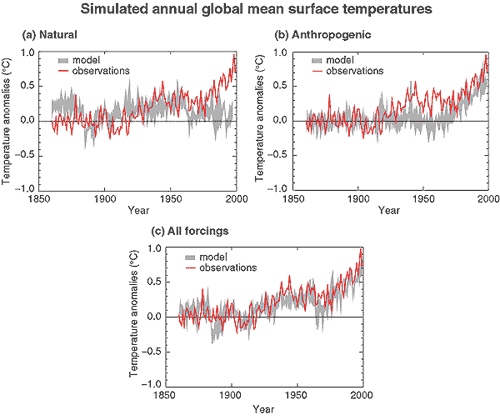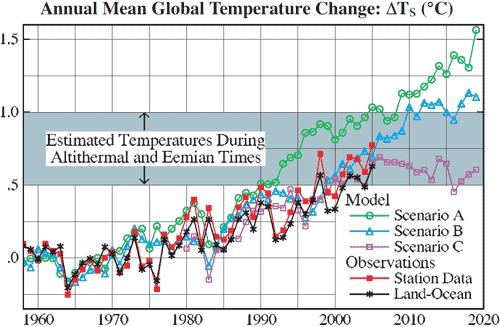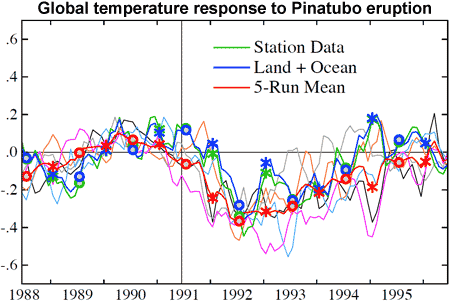 Arguments
Arguments
 Software
Software
 Resources
Comments
Resources
Comments
 The Consensus Project
The Consensus Project
 Translations
Translations
 About
Support
About
Support


Latest Posts
- Skeptical Science New Research for Week #51 2025
- What are the causes of recent record-high global temperatures?
- Fact brief - Are toxic heavy metals from solar panels posing a threat to human health?
- Emergence vs Detection & Attribution
- 2025 SkS Weekly Climate Change & Global Warming News Roundup #50
- Skeptical Science New Research for Week #50 2025
- The rest of the world is lapping the U.S. in the EV race
- Fact brief - Are electromagnetic fields from solar farms harmful to human health?
- Comparing climate models with observations
- 2025 SkS Weekly Climate Change & Global Warming News Roundup #49
- Skeptical Science New Research for Week #49 2025
- Climate Adam & Dr Gilbz - Paris Climate Agreement At 10: Did It Do Anything?
- Fact brief - Does the recent slowdown in Arctic sea-ice extent loss disprove human-caused warming?
- Why the chemtrail conspiracy theory lingers and grows – and why Tucker Carlson is talking about it
- 2025 SkS Weekly Climate Change & Global Warming News Roundup #48
- Skeptical Science New Research for Week #48 2025
- Consensus machines
- Just have a Think - How an African energy revolution could save ALL of us.
- A girl’s grades drop every summer. There’s an alarming explanation.
- 2025 SkS Weekly Climate Change & Global Warming News Roundup #47
- Fact brief - Are changes in solar activity causing climate change?
- Skeptical Science New Research for Week #47 2025
- Exploring newly released estimates of current policy warming
- Climate Adam - Why the Climate Crisis is a Health Crisis
- Super pollutants are trendy, but we should be careful how we use them
- 2025 SkS Weekly Climate Change & Global Warming News Roundup #46
- Skeptical Science New Research for Week #46 2025
- On the Gates climate memo
- Climate Adam - Climate Scientist responds to Bill Gates
- Five ways Joe Rogan misleads listeners about climate change
Archived Rebuttal
This is the archived Intermediate rebuttal to the climate myth "Models are unreliable". Click here to view the latest rebuttal.
What the science says...
|
While there are uncertainties with climate models, they successfully reproduce the past and have made predictions that have been subsequently confirmed by observations. |
There are two major questions in climate modeling - can they accurately reproduce the past (hindcasting) and can they successfully predict the future? To answer the first question, here is a summary of the IPCC model results of surface temperature from the 1800's - both with and without man-made forcings. All the models are unable to predict recent warming without taking rising CO2 levels into account. Noone has created a general circulation model that can explain climate's behaviour over the past century without CO2 warming.

Figure 1: Comparison of climate results with observations. (a) represents simulations done with only natural forcings: solar variation and volcanic activity. (b) represents simulations done with anthropogenic forcings: greenhouse gases and sulphate aerosols. (c) was done with both natural and anthropogenic forcings (IPCC).
Predicting/projecting the future
A common argument heard is "scientists can't even predict the weather next week - how can they predict the climate years from now". This betrays a misunderstanding of the difference between weather, which is chaotic and unpredictable, and climate which is weather averaged out over time. While you can't predict with certainty whether a coin will land heads or tails, you can predict the statistical results of a large number of coin tosses. In weather terms, you can't predict the exact route a storm will take but the average temperature and precipitation over the whole region is the same regardless of the route.
There are various difficulties in predicting future climate. The behaviour of the sun is difficult to predict. Short-term disturbances like El Nino or volcanic eruptions are difficult to model. Nevertheless, the major forcings that drive climate are well understood. In 1988, James Hansen projected future temperature trends (Hansen 1988). Those initial projections show good agreement with subsequent observations (Hansen 2006).

Figure 2: Global surface temperature computed for scenarios A, B, and C, compared with two analyses of observational data (Hansen 2006).
Hansen's Scenario B (described as the most likely option and most closely matched the level of CO2 emissions) shows close correlation with observed temperatures. Hansen overestimated future CO2 levels by 5 to 10% so if his model were given the correct forcing levels, the match would be even closer. There are deviations from year to year but this is to be expected. The chaotic nature of weather will add noise to the signal but the overall trend is predictable.
When Mount Pinatubo erupted in 1991, it provided an opportunity to test how successfully models could predict the climate response to the sulfate aerosols injected into the atmosphere. The models accurately forecasted the subsequent global cooling of about 0.5 °C soon after the eruption. Furthermore, the radiative, water vapor and dynamical feedbacks included in the models were also quantitatively verified (Hansen 2007). More on predicting the future...

Figure 3: Observed and simulated global temperature change during Pinatubo eruption. Green is observed temperature by weather stations. Blue is land and ocean temperature. Red is mean model output (Hansen 2007).
Uncertainties in future projections
A common misconception is that climate models are biased towards exaggerating the effects from CO2. It bears mentioning that uncertainty can go either way. In fact, in a climate system with net positive feedback, uncertainty is skewed more towards a stronger climate response (Roe 2007). For this reason, many of the IPCC predictions have subsequently been shown to underestimate the climate response. Satellite and tide-gauge measurements show that sea level rise is accelerating faster than IPCC predictions. The average rate of rise for 1993-2008 as measured from satellite is 3.4 millimetres per year while the IPCC Third Assessment Report (TAR) projected a best estimate of 1.9 millimetres per year for the same period. Observations are tracking along the upper range of IPCC sea level projections (Copenhagen Diagnosis 2009).

Figure 4: Sea level change. Tide gauge data are indicated in red and satellite data in blue. The grey band shows the projections of the IPCC Third Assessment report (Copenhagen Diagnosis 2009).
Similarly, summertime melting of Arctic sea-ice has accelerated far beyond the expectations of climate models. The area of sea-ice melt during 2007-2009 was about 40% greater than the average prediction from IPCC AR4 climate models. The thickness of Arctic sea ice has also been on a steady decline over the last several decades.

Figure 5: Observed (red line) and modeled September Arctic sea ice extent in millions of square kilometres. Solid black line gives the average of 13 IPCC AR4 models while dashed black lines represent their range. The 2009 minimum has recently been calculated at 5.10 million km2, the third lowest year on record and still well below the IPCC worst case scenario (Copenhagen Diagnosis 2009).
Do we know enough to act?
Skeptics argue that we should wait till climate models are completely certain before we act on reducing CO2 emissions. If we waited for 100% certainty, we would never act. Models are in a constant state of development to include more processes, rely on fewer approximations and increase their resolution as computer power develops. The complex and non-linear nature of climate means there will always be a process of refinement and improvement. The main point is we now know enough to act. Models have evolved to the point where they successfully predict long-term trends and are now developing the ability to predict more chaotic, short-term changes. Multiple lines of evidence, both modeled and empirical, tell us global temperatures will change 3°C with a doubling of CO2 (Knutti & Hegerl 2008).
Models don't need to be exact in every respect to give us an accurate overall trend and its major effects - and we have that now. If you knew there were a 90% chance you'd be in a car crash, you wouldn't get in the car (or at the very least, you'd wear a seatbelt). The IPCC concludes, with a greater than 90% probability, that humans are causing global warming. To wait for 100% certainty before acting is recklessly irresponsible.
Updated on 2010-07-09 by John Cook.
THE ESCALATOR

(free to republish)
























































